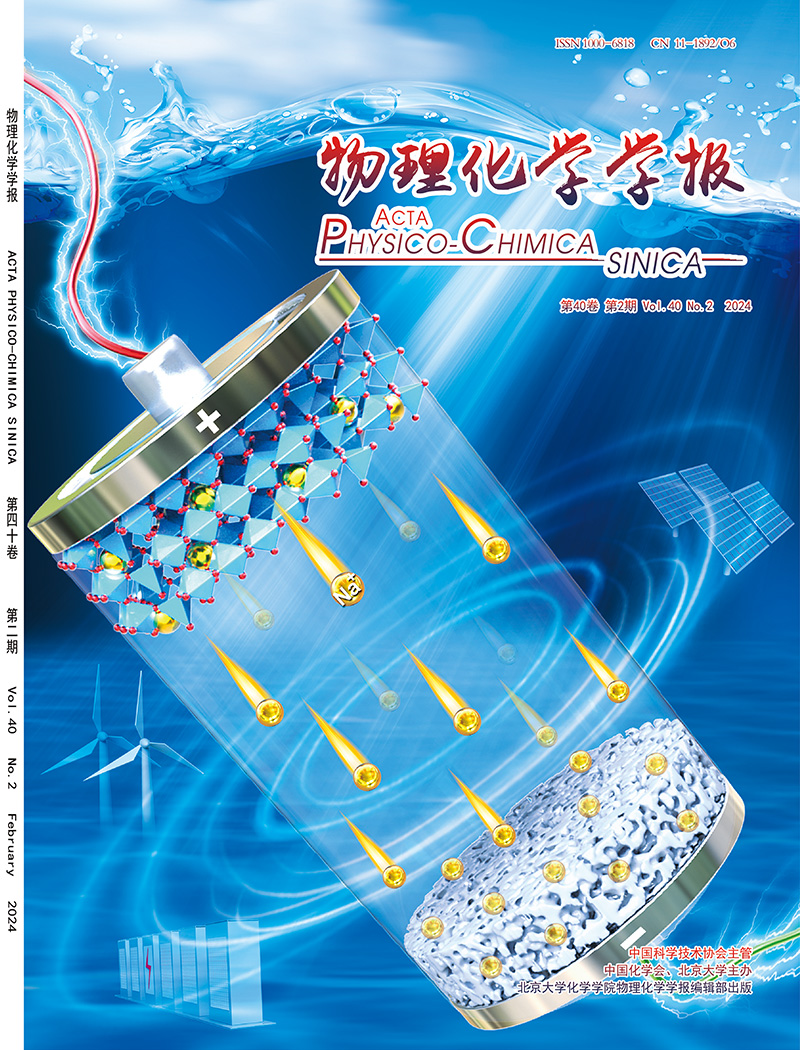mof模板法合成氮掺杂碳以增强电化学钠离子的储存和去除
IF 13.5
2区 化学
Q1 CHEMISTRY, PHYSICAL
引用次数: 0
摘要
水资源短缺已成为21世纪一个突出的全球性挑战,促使海水淡化技术迅速发展。电容去离子(CDI)作为一种具有成本效益的可持续水净化解决方案脱颖而出。电极材料在电容去离子过程中起着至关重要的作用,影响着盐离子的去除和电荷的存储能力。碳基材料具有比表面积大、导电性好等特点,是电容去离子的理想材料。然而,它们去除盐离子的有效性受到孔结构不清和润湿性差的阻碍,限制了盐离子的运输和储存。在本研究中,通过MOF-5和三聚氰胺混合物的碳化,成功合成了氮掺杂的分层多孔碳,其中三聚氰胺既是氮源又是致孔剂。通过优化炭化温度,得到的MOF-5衍生的纳米多孔碳(NPC-800)保留了MOF-5的立方形态,具有较大的表面积(754.34 m2 g−1)、高氮含量(10.13%)和良好的润湿性。电化学分析表明,在0.2、0.5、1.0、2.0、4.0和6.0 A g−1电流密度下,NPC-800电极的比容量分别为91.8、76.1、66.3、51.0、28.0和15.2 mAh g−1,优于NPC-700(26.3、19.7、13.1、6.90、2.30和1.30 mAh g−1)和NPC-900(46.0、37.8、30.4、21.3、11.7和7.50 mAh g−1)。NPC-800优异的电化学性能可归因于其最大的比表面积、丰富的孔隙结构和最佳的润湿性,促进了盐离子吸附和扩散的活性位点的增加。此外,NPC-800表现出低固有电阻,快速离子转移动力学和卓越的循环稳定性(50,000次循环),在5 A g−1下保持100%的容量。进一步研究了NPC电极在不同施加电压(0.8、1.0和1.2 V)和初始NaCl溶液浓度(100、300和500 mg L−1)下的CDI性能,表明NPC-800电极的吸附能力优于其他两种电极。具体来说,与NPC-700和NPC-900相比,NPC-800在500 mg L−1盐溶液中,在1.2 V下表现出更快的盐吸附速率(2.8 mg g−1 min−1)和更高的盐吸附容量(24.17 mg g−1)。因此,三聚氰胺辅助合成的n掺杂多孔碳材料有望成为电容去离子的最佳选择。本文章由计算机程序翻译,如有差异,请以英文原文为准。

MOF-templated synthesis of nitrogen-doped carbon for enhanced electrochemical sodium ion storage and removal
Water scarcity has become a prominent global challenge in the twenty-first century, prompting the rapid advancement of desalination technology. Capacitive deionization (CDI) stands out as a cost-effective solution for sustainable water purification. The electrode material plays a pivotal role in capacitive deionization, impacting the salt ion removal and charge storage capacity. Carbon-based materials, characterized by high surface area and electrical conductivity, are ideal materials for capacitive deionization. However, their effectiveness in salt ion removal is hindered by unclear pore structures and poor wettability, limiting salt ion transport and storage. In this study, nitrogen-doped hierarchical porous carbon is successfully synthesized through the carbonization of MOF-5 and melamine mixtures, wherein melamine serves as both a nitrogen source and porogenic agent. Through optimization of carbonization temperature, the resulting MOF-5-derived nanoporous carbon (referred to as NPC-800) retains the cubic morphology of MOF-5, possesses a large surface area (754.34 m2 g−1), high nitrogen content (10.13 %), and favorable wettability. Electrochemical analysis reveals that the NPC-800 electrode demonstrates specific capacities of 91.8, 76.1, 66.3, 51.0, 28.0, and 15.2 mAh g−1 at current densities of 0.2, 0.5, 1.0, 2.0, 4.0, and 6.0 A g−1, respectively, outperforming NPC-700 (26.3, 19.7, 13.1, 6.90, 2.30, and 1.30 mAh g−1) and NPC-900 (46.0, 37.8, 30.4, 21.3, 11.7, and 7.50 mAh g−1). The superior electrochemical performance of NPC-800 can be attributed to its maximal specific surface area, abundant pore structure, and optimal wettability, facilitating increased active sites for salt ion adsorption and diffusion. Moreover, NPC-800 exhibits low intrinsic resistance, rapid ion transfer kinetics, and exceptional cycling stability (50,000 cycles) with 100 % capacity retention at 5 A g−1. Further investigation into the CDI performance of NPC electrodes under different applied voltages (0.8, 1.0, and 1.2 V) and initial NaCl solution concentrations (100, 300, and 500 mg L−1) demonstrates the superior adsorption capacity of the NPC-800 electrode compared to the other two electrodes. Specifically, at 1.2 V in a 500 mg L−1 salt solution, NPC-800 exhibits a faster salt adsorption rate (2.8 mg g−1 min−1) and higher salt adsorption capacity (24.17 mg g−1) compared to NPC-700 and NPC-900. Consequently, the melamine-assisted synthesis of N-doped porous carbon materials holds promise as an optimal choice for capacitive deionization.
求助全文
通过发布文献求助,成功后即可免费获取论文全文。
去求助

 求助内容:
求助内容: 应助结果提醒方式:
应助结果提醒方式:


